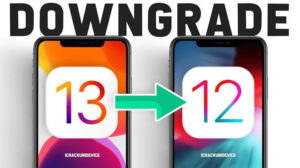iOS is the core operating system developed for the plethora of Apple devices on the market, at current. Over the years, Apple has been transformed into an Information Technology giant. The late Steve Jobs has been an innovator and a game-changer in his field, and the work he has put in to perfect his creation is extraordinary. It’s due to his efforts that genius features like gesture-based swipes, face unlocking, voice assistants, and many more examples have been brought to life. However, one of the unsung heroes enabling this popularity of Apple products is its operating system. The essential hardware involved in Apple products has been documented to be pretty bog-standard. The technical aspects of its operating system are what make it stand out in this ocean of silicon-based products.
Apple iOS is probably the most robust operating system at present. It provides consumers with unmatched processing speed, fluid interface, and unparalleled flexibility when it comes to mobile computing. Upon taking a cursory look at any Apple device, its backdrop doesn’t seem quite spectacular. However, a closer look at the Apple iOS shows significant innovations in the internal workspace. They contribute to a faster runtime and lower RAM usage as compared to other conventional mobile devices. These features have been introduced from the very first version of this operating system, and further releases have focussed on refining and optimizing these features to provide us with the best experience. As of now, there have been 13 iterations of this operating system. The latest version is the aptly-named iOS 13. Let’s take a more detailed look at the iOS platform.

What is iOS 13?
iOS has been the cornerstone of Apple devices, explicitly developed the iPad, iPod, and iPhone devices. iOS 13 was unveiled at the Apple Worldwide Developers’ Conference on the 3rd of June 2019. The beta version was made public on the 24th of June of the same year, and subsequently, four minor many bug fixes and updates have been released. It provides supports most devices with at least 1 GB of RAM; however, it is not supported by 64-bit devices. It retains application support from the previous versions but has introduced some critical tweaks in terms of security, privacy, and other features of its interface. Let’s learn about the many innovative features introduced by iOS 13.
iOS 13 | Features
The following are the salient features of the iOS 13 platform.
- Introduction of user permission prompts, giving you the option of not sharing your data with other internal or external applications.
- In-built ‘dark mode’ for reading in low light and on-screen volume modifier.
- Increased functionality and sound control in ‘Siri’ – the Apple voice assistant.
- Introduction of in-built QuickType virtual keyboard, whereby you can write words by swiping on the letters.
- Multiple finger-based swipe gestures are introduced for greater flexibility.
- Option for limiting the battery charging to 80% for reducing overcharging during sleeping.
- Improved Face ID unlocks and lowered the size of file formats for reducing memory usage.
Despite these apparent advantages, iOS 13 may not be optimized for your device. Thus, you need to rollback your device from iOS 13 to iOS 12. Let’s take a look at how you can downgrade your iOS device.
How to Rollback iOS 13 to iOS 12
You can downgrade from iOS 13 to iOS 12 by following the steps listed below.
- Install the iTunes store into your computer.
- Open iTunes from your computer.
- Connect your Apple device with the computer using a USB cable.
- Set your phone into Recovery mode.
- A prompt will appear, click on the ‘Restore’ option followed by ‘Restore and Update.
Keep your device connected. It should restart multiple times. When the process finally ends, you will see that iOS 12 will be installed on your mobile device.
Leave a Reply